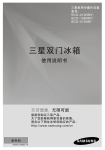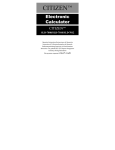Download DM Chilled Water Series
Transcript
Precision Cooling For Business-Critical Continuity™ Liebert® DM Chilled Water Series User Manual LIEBERT_DM Chilled Water Series Cooling Unit User Manual Version: V1.0 Revision date: Nov. 03, 2012 ROM: 31012828 Emerson Network Power provides customers with technical support. Users may contact the nearest Emerson local sales office or service center. Copyright © 2010 by Emerson Network Power Co., Ltd. All rights reserved. The contents in this document are subject to change without notice. Emerson Network Power Co., Ltd. Address: No.1 Kefa Rd., Science & Industry Park, Nanshan District 518057, Shenzhen China Homepage: www.emersonnetworkpower.com.cn E-mail: [email protected] Contents Chapter 1 Overview ............................................................................................................................................................ 1 1.1 Model description .....................................................................................................................................................................1 1.2 Product introduction .................................................................................................................................................................1 1.3 Key parts ..................................................................................................................................................................................1 1.4 Options .....................................................................................................................................................................................2 1.4.1 Remote monitor............................................................................................................................................................2 1.4.2 Energy-saving card .......................................................................................................................................................2 1.5 Environmental requirement ......................................................................................................................................................2 1.5.1 Operating environment .................................................................................................................................................2 1.5.2 Storage environment ....................................................................................................................................................2 Chapter 2 Mechanical Installation ....................................................................................................................................... 3 2.1 Unpacking inspection ...............................................................................................................................................................3 2.2 Installation precaution ..............................................................................................................................................................3 2.3 System installation layout.........................................................................................................................................................3 2.3.1 General layout ..............................................................................................................................................................3 2.3.2 Mechanical parameters .................................................................................................................................................4 2.4 Unit installation ........................................................................................................................................................................7 2.4.1 Equipment room requirement .......................................................................................................................................7 2.4.2 Installation space requirement ......................................................................................................................................8 2.4.3 Installation steps ...........................................................................................................................................................8 2.5 Installation of unit pipes .........................................................................................................................................................11 2.6 Items for inspection ................................................................................................................................................................12 Chapter 3 Electric Installation............................................................................................................................................ 13 3.1 Task description .....................................................................................................................................................................13 3.2 Precautions .............................................................................................................................................................................13 3.3 Connection of unit power cable ..............................................................................................................................................13 3.4 Connection of control cable....................................................................................................................................................14 3.4.1 Connection of control terminal ...................................................................................................................................14 3.4.2 Connection of monitoring cable .................................................................................................................................15 3.5 Connection of energy-saving card ..........................................................................................................................................16 3.6 Items for inspection ................................................................................................................................................................18 Chapter 4 System Test...................................................................................................................................................... 19 4.1 Startup inspection ...................................................................................................................................................................19 4.2 Function test ...........................................................................................................................................................................19 Chapter 5 Microprocessor ................................................................................................................................................. 20 5.1 Features ..................................................................................................................................................................................20 5.2 Appearance .............................................................................................................................................................................20 5.3 Display ...................................................................................................................................................................................21 5.4 Control key .............................................................................................................................................................................21 5.4.1 Function description ...................................................................................................................................................21 5.4.2 Operation example .....................................................................................................................................................22 5.5 Control interface .....................................................................................................................................................................22 5.5.1 Shutdown interface .....................................................................................................................................................22 5.5.2 Startup interface .........................................................................................................................................................22 5.5.3 Normal interface.........................................................................................................................................................23 5.5.4 Password interface .....................................................................................................................................................23 5.6 Menu structure........................................................................................................................................................................23 5.6.1 Main menu .................................................................................................................................................................23 5.6.2 Alarm menu................................................................................................................................................................24 5.6.3 Setting point ...............................................................................................................................................................27 5.6.4 System status ..............................................................................................................................................................27 5.6.5 System menu ..............................................................................................................................................................28 5.6.6 Help menu ..................................................................................................................................................................31 Chapter 6 System Maintenance ........................................................................................................................................ 33 6.1 Electric inspection ..................................................................................................................................................................33 6.2 Unit maintenance....................................................................................................................................................................33 6.2.1 Filter ...........................................................................................................................................................................33 6.2.2 Fan .............................................................................................................................................................................34 6.2.3 Drainage pipe .............................................................................................................................................................34 6.2.4 Water flow regulating valve .......................................................................................................................................34 6.3 Maintenance checklist ............................................................................................................................................................36 Chapter 7 Failure Diagnosis and Troubleshooting ............................................................................................................ 37 Appendix 1 Menu Structure Diagram ................................................................................................................................ 41 Appendix 2 List of Parameters .......................................................................................................................................... 42 Appendix 3 Introduction to SiteMonitor Software .............................................................................................................. 44 Appendix 4 Symbol Table for Toxic/Hazardous Substances and Elements ...................................................................... 46 Chapter 1 Overview 1 Chapter 1 Overview This chapter mainly introduces the model description, product profile, main parts, optional parts and environment requirement of Liebert_DM chilled water series cooling unit. 1.1 Model description The model description of Liebert_DM chilled water series cooling unit is as shown in Fig. 1-1 DM H 09 U M H 2 Version Cooling System . C:cooling onl y: O:with heater; H: with heater and humid itier Power Supply. M:3-ph/380V/50Hz Air Discharge. U:upflow; F:downflow; D:duct Cooling Capactity. 09:8.2kW; 12:11.6kW; 17:16.3kW; 25:23.2kW Chilled Water. Liebert_DM Fig.1- 1 Model description 1.2 Product introduction The Liebert_DM chilled water series cooling unit is a small precise environment control system. It is especially designed for the cooling of electronic equipment and applicable to the environment control of equipment room or computer room. It is highly reliable and able to provide a proper running environment for the precision equipment, such as sensitive equipment, industry process equipment, communication equipment and computer. The Liebert_DM chilled water series cooling unit is equipped with microprocessor and able to automatically switch functions according to the setting values of the program and the indoor environment conditions. 1.3 Key parts The unit is composed of such key parts as chilled water coil, fan, microprocessor, screen and water flow regulating valve. For the optional parts, please refer to 1.4 Options. Chilled water coil Fin type heat exchanger is adopted. The chilled water coil is designed and verified for specific models to ensure the distribution evenness of chilled water in all the loops and maximize the heat exchange efficiency. Fan Centrifugal fan of high efficiency and high reliability is adopted, which features large blast volume, long air supply distance, direct drive and convenient maintenance. Microprocessor User interface of simple operation is provided. Multi-level password protection, auto power recovery, high/low voltage protection and phase loss protection are provided. Expert level failure diagnosis system is configured to automatically display the failure contents and facilitate the equipment maintenance by the service personnel. User Manual of Liebert_DM Chilled Water Series Cooling Unit 2 Chapter 1 Overview Water flow regulating valve The water flow regulating valve can regulate the chilled water flow according to the cooling demand. The water flow regulating valve adopts union swivel for the connection with the system pipes, which is convenient for the onsite installation and maintenance. Filter High polymer dust absorption filtering material is adopted. It has compact structure and is easy for maintenance. 1.4 Options 1.4.1 Remote monitor The Liebert_DM chilled water series cooling unit adopts the standard protocols of Ministry of Information Industry. For details, please refer to Centralized Power Equipment, Air Conditioning and Environment Monitoring and Management System for Communication Stations, Part III: Protocol for Front-end Intelligent Equipment. It realizes the communication with the host computer through the RS485 port and is controlled by the host software. For details about the monitoring software of Emerson, SiteMonitor, please refer to Appendix IV Introduction to SiteMonitor Monitoring Software. 1.4.2 Energy-saving card The Liebert_DM chilled water series cooling unit adopts external energy-saving card to monitor the maximum temperature in the room. The energy-saving card is deployed in the place with large thermal load and high temperature. This cooling unit can be equipped with up to 4 energy-saving cards. When the temperature values measured by all the energy-saving cards are lower than the setting value of “sleep temperature”, and only the internal fan needs to run, if “sleep mode” is set as “enabled”, the cooling unit will shut down the internal fan and enter the sleep mode, so as to realize energy efficiency. 1.5 Environmental requirement 1.5.1 Operating environment The operating environment shall meet the standards of GB4798.3-90. For details, please refer to Table 1-1. Table 1-1 Requirement of operating environment Item Requirement Vertical installation, with the installation base ≥150mm Indoor temperature: 4ºC~40ºC Chilled water inlet temperature: 5ºC~12ºC Installation Ambient temperature altitude <1000m, derated when it is more than 1000m Operating voltage range 3N~380V (-15%~+20%) , 50Hz 1.5.2 Storage environment The storage environment shall meet the standards of GB4798.3-1996. For details, please refer to Table 1-2. Table 1-2 Requirement of storage environment Item Storage environment Ambient humidity Ambient temperature Storage time Requirement Indoor, clean (free of dust) 5%RH~85%RH -20ºC~+54ºC No more than 6 months in total (transportation plus storage), performance needs to be reevaluated after 6 months User Manual of Liebert_DM Chilled Water Series Cooling Unit Chapter 2 Mechanical Installation 3 Chapter 2 Mechanical Installation This chapter will describe the mechanical installation of the Liebert_DM chilled water series cooling unit in detail, including unpacking inspection, unit installation and pipe installation. 2.1 Unpacking inspection Move the equipment to the place closest to the final installation site before unpacking. In case any loss or damage of any parts is discovered during inspection, the same shall be reported to the carrier immediately. Concealed damages noted shall also be reported to the carrier and the local office of the goods supplier. Please do not accept the damaged equipment. 2.2 Installation precaution 1. The Liebert_DM chilled water series cooling unit adopts standalone installation mode. The unit must be installed on the ground of the equipment room or computer room. 2. Before installing the equipment, check if the installation environment meets the relevant requirements as specified in 1.5 Environmental Requirement. And check if the building needs to be reformed for the pipe laying, wiring and ventilation pipe mounting. 3. Install the equipment strictly according to the design drawing, and reserve corresponding installation/maintenance space. Please refer to the engineering dimensions provided by the manufacturer. 2.3 System installation layout 2.3.1 General layout The general layout of the system is as shown in Fig.2-1. Air discharge valve 放气阀 换热器盘管 Heat exchanger coil 水流量调节阀 Water flow regulating valve Holding平衡阀或隔离阀* valve or isolating valve * Chilled冷冻水进口 water inlet Water filter * 水过滤器* Isolating 隔离阀* valve * Chilled 冷冻水出口 water outlet Chilled water 冷冻水进出 软接口* Soft joint * 口螺纹连接 inlet/outlet threaded joint 排水阀* Water discharge valve * Fig.2-1 General layout diagram Note 1. : Pipeline provided by the manufacturer. 2. : Pipeline laid onsite (by the technical staff) 3.*: These components are not provided by Emerson Network Power Co., Ltd, but they are recommended to be used for the normal operation of the system and maintenance. 4. After finishing the installation, air discharge must be carried out before pouring water so as to ensure the heat transfer effect of the heat exchanger. 5. In winter in the northern region, the air conditioning unit must be emptied of water to prevent frosting the heat exchanger if it will be idle for a long time. User Manual of Liebert_DM Chilled Water Series Cooling Unit 4 Chapter 2 Mechanical Installation 2.3.2 Mechanical parameters Dimensions (mm) For the mechanical parameters of the unit, please refer to Fig.2-2 and Table 2-1. 60 8 57 5 5 10 38 1740 1900 6 DMH09 unit DMH12 unit 1202 38 5 6 DMH17 unit 1900 1740 1102 57 DMH25 unit Fig.2-2 Outline dimensions of the units (unit: mm) User Manual of Liebert_DM Chilled Water Series Cooling Unit Chapter 2 Mechanical Installation Table 2-1 Outline dimensions and weights of the units Product model DMH09 DMH12 DMH17 DMH25 Size (W×D×H) (mm) 510×386×1740 608×575×1900 1102×386×1740 1202×575×1900 Net Weight (kg) ≤90 ≤127 ≤169 ≤210 Base cutting position and dimensions The base cutting position and dimensions are as shown in Fig.2-3. Bac k of the unit Chilled w ater outlet Right s ide of the unit Lef t s ide of the unit Chilled w ater inlet Cablet inlet Condens ed w ater drainage hole 4 ground retaining holes Front of the unit Base cutting position of DMH09 unit Back of the unit Chilled water outlet Chilled water inlet Right side of the unit Left side of the unit Condensed water drainage hole Cablet inlet 4 ground retaining holes Front of the unit Base cutting position of DMH12 unit User Manual of Liebert_DM Chilled Water Series Cooling Unit 5 6 Chapter 2 Mechanical Installation Bac k of the unit Chilled w ater outlet Lef t s ide of the unit Chilled w ater inlet Right s ide of the unit Condens ed w ater drainage hole Cablet inlet 4 ground retaining holes Front of the unit Base cutting position of DMH17 unit Bac k of the unit Chilled w ater outlet Chilled w ater inlet Lef t s ide of the unit Right s ide of the unit Cablet Condens ed w ater drainage hole inlet 4 ground retaining holes Front of the unit Base cutting position of DMH25 unit Fig.2-3 Base cutting position and dimensions (unit: mm) Side plate cutting position dimensions If it is unable to lay pipes and cables from the base, side connection may be adopted. The position and size of the knock-out holes are as shown in Fig.2-4. The inlet and outlet can be selected according to the actual situation, but any two of the pipes, power cables and signal cables shall not enter/exit the unit through the same hole. User Manual of Liebert_DM Chilled Water Series Cooling Unit Chapter 2 F ro n t o f t h e u n it Mechanical Installation 7 B a c k o f t h e u n it C h ille d wa t e r o u t le t C h ille d wa t e r in le t DMH09/DMH17 side Back of the unit Front of the unit Chilled water outlet Chilled water inlet plate DMH09/DMH25 side plate Fig.2-4 Side plate knock-out hole (unit: mm) 2.4 Unit installation 2.4.1 Equipment room requirement The detailed requirements on equipment room are as follows: 1. The equipment room shall have good thermal insulation and air-tight damp course. Note To ensure the normal operation of the environment control system in the air conditioning room, damp proof and thermal insulation are the most important factors. 2. The outdoor air shall be prevented from entering the equipment room. The entry of the outdoor air will increase the cooling and dehumidification load of the system. It is suggested to maintain the absorption amount of the outdoor air below 5% of the air circulating in the equipment room. User Manual of Liebert_DM Chilled Water Series Cooling Unit 8 Chapter 2 Mechanical Installation 3. All the doors and windows shall be air-tight, and the gaps shall be as small as possible. 2.4.2 Installation space requirement Note The DMH chilled water series cooling unit will produce condensed water. If there exists any water leakage, the adjacent precision equipment may be damaged. Therefore, the cooling unit shall not be installed near the precision equipment, and drainage pipe shall be provided at the installation site. The detailed requirements on installation site are as follows 1. To ensure the normal operation of the unit, spacious and open place shall be selected as the installation site. 2. The unit shall not be installed in the narrow space. Otherwise, the air flow will be blocked, and the cooling cycle will be shortened, causing return airflow short circuit and air noise. 3. The unit shall not be installed in cavity or at the end of the slender room. 4. To avoid crossover of airflow, unbalanced load and competitive operation, do not install several units side by side. 5. To facilitate the routine maintenance, do not install any equipment (e.g., smoke detector) above the cabinet. 6. A maintenance clearance of at least 600mm shall be reserved in front of the cooling unit. The unit installation position diagram is as shown in Fig.2-5. Proper position 合理位置 Cooling unit 空调机组 600 Cooling unit 空调机组 Improper position 不合理位置 Note: 注: Indicates the maintenance clearance reserved for installation 表示安装时需预留的维修空间 Fig.2-5 Unit installation position diagram Installation steps 1. Use the M10X20 expansion bolts to fix the self-made installation base to the selected unit installation position. The installation base and size are as shown in Fig.2-6. User Manual of Liebert_DM Chilled Water Series Cooling Unit Chapter 2 Mechanical Installation 4 个4机 组mounting 安 装 孔 holes unit 0 5 1 > H Rubber 橡 胶gasket 垫 ( 8(8mm~10mm) m m ~ 1 0 m m 厚thick ) Rubber gasket thick 橡胶垫 ( 8 m8mm m厚 ) 角 钢( 4 0 ×(40 4 0× ×40 3) Steel angle × 3) 4个 expansion bolt holes 膨胀螺栓 安 mounting 装孔 Footer (100 100 脚 掌 钢steel 板 (plate 100× 1 0× 0× 4) × 4) D M E 9diagram / D M E 1 2for 机组 安 装 底 座 示 unit 意 图installation Schematic DMH9/DMH12 DME9/DME12 unit installation base base 后 Back 面 后 面 Back 前面 Front Front 前面 M E 9 of 机 DMH9 组 安 装unit 底座 俯 视 图 bas Top Dview DME9 installation M E 1 2of机DMH12 组 安 装unit 底座 俯 视 图 base TopDview DME12 installation User Manual of Liebert_DM Chilled Water Series Cooling Unit 9 10 Chapter 2 Mechanical Installation 4 unit mounting 4个 机 组 安 装 孔 holes 6 expansion bolt 6个 膨 胀 螺 栓 安 装 孔 mounting holes Rubber gasket 橡 (8mm~10mm) 胶 垫 ( 8 m m ~ 1thick 0mm厚 ) 0 5 1 > H Steel angle 角钢( 4 0 ×(40 4 0××40 3) × 3) Footer steel 脚 掌钢板 ( 1plate 0 0 × (100 1 0 0× ×100 4 )×4) 8mm thick 橡Rubber 胶 垫 (gasket 8mm厚 ) D M E 1diagram 7 / D M E 2 5for 机DMH17/DMH25 组安装底座示意 图 installation Schematic DME17/DME25 unit unit installation base base 后Back 面 前 面 Front M E 1 7of 机 DMH17 组安装底 座installation 俯视图 TopDview DME17 unit base Back 后 面 前 面 Front D M E 2of 5机 组 安 装unit 底座 俯 视 图 base Top view DME25 DMH25 installation Fig.2-6 Installation base (unit: mm)2. Apply a layer of 8mm~10mm thick rubber gasket to the base, as shown in Fig. 2-6. 3. Place the unit on the installation base and fix it with M8X70 bolts. User Manual of Liebert_DM Chilled Water Series Cooling Unit Chapter 2 Mechanical Installation 11 2.5 Installation of unit pipes The pipes to be connected include: 1. Drainage pipe of the unit: 2. Inlet and outlet pipes of chilled water. Connection of the drainage pipe The external diameter of the condensed water drainage pipe of the unit heat exchanger is 19mm. The condensed water drainage pipe is fixed to the right side of the unit base. It shall be connected to a water pipe with the inner diameter of 19 mm and fixed with pipe hoop. Note 1. A Φ19 pipe hoop is delivered as an option for connecting the drainage pipe. Connection of chilled water inlet and outlet pipes The chilled water inlet and outlet pipes are connected to the chilled water unit through threaded joint, as shown in Fig. 2-7.The inlet and outlet pipes should be connected according to labels on the unit. Please do not reverse the connection. The chilled water inlet and outlet pipes can be connected through the bottom plate or the side plate. For the pipe inlet and outlet position, please refer to Fig. 2-3 and Fig. 2-4. The chilled water inlet and outlet pipes should have soft connector at the unit connections. The chilled water inlet pipes should be equipped with the water filter with over 60 meshes to facilitate the clearance of impurities in the pipes. The chilled water inlet and outlet pipes need to be equipped with several isolating valves, which can cut off water sources during the period of maintenance. One of the isolating valves can be balance valve. Chilled water system with a balance valve would be more efficient and more accurate in controlling water distribution. For detailed distribution, please refer to Fig. 2-2.Water pressure should be able to overcome the water pressure drop caused by all the components of water system. Considering the possibility that water pressure drop would increase due to incrustant and impurities resulted from long-time running of the system. Therefore, when choosing the head components (e.g. pump), we should consider making 20% ~ 25% redundancy. The weight of water pipes connected with the unit should not be assumed by the unit. The chilled water inlet and outlet pipes must be kept warm. Table 2-2 shows the connecting dimensions of chilled water inlet and outlet pipes of various units. Note Be careful when connecting the chilled water inlet and outlet pipes. Before the operation, please read carefully the following precautions: 1. Remove the dust shield. 2. Wipe the connecting base and threaded surface carefully with clean cloth. 3. Wind hemp thread or Teflon tape evenly on the threaded surface. 4. Tighten the threaded joint, ensuring accurate alignment of the threads. 5. Draw a vertical line from the male connector to the female connector with a marker. 6. Verify the sealing status by filling it with nitrogen or water. If any leakage is found, tighten it immediately or reconnect the joint. User Manual of Liebert_DM Chilled Water Series Cooling Unit 12 Chapter 2 Mechanical Installation Chilled water inlet pipe 冷冻水进水管 Chilled water outlet pipe 冷冻水出水管 Fig.2-7 Schematic diagram for connection of chilled water pipeTable2-2 External diameter and specifications for chilled water inlet and outlet pipes Product model External diameter for chilled water inlet and outlet pipes (mm) Specifications for threaded joint of chilled water inlet and outlet pipes DMH09 25 G 1″ DMH12 25 G 1″ DMH17 32 G 1-1/4″ DMH25 32 G 1-1/4″ 2.6 Items for inspection After the mechanical installation, check and verify that: 1. Certain clearance has been reserved around the unit for maintenance; 2. The equipment is vertically erected, and the fastening pieces have been locked; 3. The pipes connecting the unit have been connected; 4. The chilled water pump has been installed (if necessary); 5. The drainage pipe has been connected; 6. The joints for chilled water inlet and outlet pipes have been tightened and there is no leakage; 7. The equipment installation has been completed, and the foreign materials inside and around the equipment (e.g., transportation materials, structural materials, tools, etc.) have been cleared. 8. Rotate the fan blade to check if the fan rotates smoothly without any noise. After all the above items have been inspected and confirmed, carry out the electric installation. User Manual of Liebert_DM Chilled Water Series Cooling Unit Chapter 3 Electric Installation 13 Chapter 3 Electric Installation This chapter introduces the electric installation of the Liebert_DM chilled water series cooling unit, including the task description, precautions, unit wiring and items for inspection. 3.1 Task description The wires to be connected onsite include: 1. The unit power cable: 3×L+N+PE. 2. The unit monitor control cable (if remote monitoring is configured). 3. The energy-saving card connecting wire (if energy-saving card is configured). 3.2 Precautions 1. The connection of all the power cables, control cables and grounding cables shall comply with the national and local electrician regulations. 2. For the full load current, please refer to the equipment nameplate. The cable size shall comply with the local wiring rules. 3. Main power requirement: 380Vac, 50Hz, 3×L+N+PE. 4. The electric installation must be carried out by the trained and qualified personnel. 5. Before connecting the circuit, measure the input power voltage with the voltage meter to ensure that the power supply has been disconnected. 3.3 Connection of unit power cable Open the unit front door, and then you can see the electric control box of the unit. Insert the unit power cable through the through-hole, and connect one end to the unit power input terminals L1, L2, L3, N and PE (fix the cable with cable tie), and the other end to the external AC power, as shown in Fig.3-1 and Fig.3-2. When selecting the cables, please refer to the maximum running current value on the unit nameplate. 电控盒 Electric control box 电缆固定夹 Cable tie Fig.3-1 Connecting position of unit power cable L2 线 端 子 L3 线 端 子 L3 line terminal L1 line terminal L1 线 端 子 L2 line terminal Through hole 过线孔 Grounding wire terminal 地线端子 N line terminal N线端子 Fig.3-2 Amplified view of power connecting terminal User Manual of Liebert_DM Chilled Water Series Cooling Unit 14 Chapter 3 Electric Installation Note 1. Only the copper wire can be used, all the wires shall be firmly connected. 2. Ensure that the power supply voltage is equal to the rated voltage on the equipment nameplate. 3. Install a disconnecting switch before the unit power input, so that the power supply can be easily disconnected for equipment maintenance. Connect the power cable to the disconnecting switch first, and then to the equipment. 4. The equipment has high voltage. Power supply shall be cut off before performing any maintenance inside the equipment. 3.4 Connection of control cable 3.4.1 Connection of control terminal The control terminals are on the PCB of the electric control box, as shown in Fig.3-3. The PCB where the control terminals are located 控制端子所在印制板 Fig.3-3 Position of the control terminals The arrangement of the control terminals is as shown in Fig.3-4. Note Before connecting the control cables, the operator shall prepare corresponding antistatic measures. Custom 自定义11 J67 J14 Smoke 烟感 detector J22 J8 Fire 火感 detector Remote 远程关机 Custom 2 自定义2 Master/slave request 主备请求 J68 J18 J9 shutdown J10 Common Master/slave 主备切换 公共报警 alarm switching Fig.3-4 Arrangement diagram of control terminals User Manual of Liebert_DM Chilled Water Series Cooling Unit Chapter 3 Electric Installation 15 Remote shutdown, smoke detector and fire detector terminals Remote shutdown terminal J8, smoke detector terminal J14 and fire detector terminal J22 can be used to control the remote startup/shutdown of the unit and the connection of the external smoke detector and fire detector, so that the cooling unit can stop operation at special times. If the inputs of the three terminals are shorted, and the power input switch of the cooling unit is closed, the cooling unit has normal output. If any of the three terminals is disconnected, the cooling unit will stop output. The three terminals are shorted before delivery. If the control cables for smoke detector, fire detector or remote startup/shutdown need to be connected onsite, remove the short circuited wire and connect the external controller, smoke detector and fire detector respectively to J8, J14 and J22. Custom 1 and custom 2 terminals Custom 1 terminal J67 and custom 2 terminal J68 can be connected to the alarm signals beyond the cooling system. Any external alarm can be connected to the custom terminal if it has normally open dry contact. After connecting external alarm signals to the custom terminals, you should set the corresponding customized alarm trigger conditions through the microprocessor. For details, please refer to the customized alarm in 5.6.2 alarm menu. When there is no external alarm, the input status of the custom terminal is consistent with the setting. When the external alarm occurs, the input status of the custom terminal is inconsistent with the setting, the cooling unit will generate audible alarm, and the microprocessor LCD will display the corresponding alarm contents. If computer with Emerson monitoring software is connected, the alarm will also be displayed on the computer. If power supply surge protector is configured, custom 1 terminal J67 will be connected to the surge protector alarm signal upon delivery. The alarm is set as NC. Common alarm terminals. The common alarm relay connected to the common alarm terminal J10 has a group of normally open dry contacts. When there exists critical alarm, the contacts are closed. It can be used to trigger remote alarms, send signals to the building management system or dial the paging system automatically. Master/slave switching and Master/slave request terminals The Master/slave switching terminal J9 and Master/slave request terminal J18 are used to connect the two cooling units working in master/slave mode. The connecting method is as shown in Fig.3-5. 主备请求J18 Master/slave request J18 主备切换J9switching J9 Master/slave 主机 Master 主备切换J9 Master/slave switching J9 Slave 从机 Master/slave request J18 主备请求J18 Fig.3-5 Schematic diagram for the connection of Master/slave operating modeConnection of monitoring cable The RS485 port of the Liebert_DM chilled water series cooling unit is located at the back of the unit front door and connected to the upstream unit with the twisted communication cable. The position of the RS485 port is as shown in Fig.3-6. User Manual of Liebert_DM Chilled Water Series Cooling Unit 16 Chapter 3 Electric Installation RS485 port RS485接口 Fig.3-6 Position of the RS485 port The simultaneous monitoring of several Liebert_DM chilled water series cooling units can be realized through the RS485 bus. Fig.3-7 is the schematic diagram for the networking of two Liebert_DM chilled water series cooling units monitored simultaneously through the RS485 bus, taking Emerson SiteMonitor software as the example. PChost PC 后台(installed ( 安装 with SiteMonitor SiteMonitor 后台监 software) 控软件 ) Converter 转换器 RS232/RS485 Liebert_DM 1) (机组编号位置为 Unit No.: 1 Liebert_DM ( 机组编号位置为 Unit No.: 2 2 ) RS485 RS485总线 Bus Fig.3-7 Schematic diagram of the networking for monitoring two cooling units Connection of energy-saving card The energy-saving card is as shown in Fig.3-8. User Manual of Liebert_DM Chilled Water Series Cooling Unit D Chapter 3 Electric Installation 17 ERR COMM RUN Front cover 前盖 Toggle switch 拨码开关 接口Port 前视图 DME07MC1A2 底视图 Fig.3-8 Energy-saving cardThe energy-saving card adopts 4-core shielded cable for connection, and the 2 recommended cable size shall be no less than 20AWG (0.52mm ) .The reliable grounding of the shielded cable and the energy-saving card shall be ensured to enhance the immunity capacity. All the wires shall be firmly connected. Use the energy-saving card according to the following procedures: GND GND 12V +12V CANL ON CANL CANH CANH 1. Open the front cover of the plastic enclosure of the energy-saving card and take out the energy-saving card board through the slot of the plastic enclosure. The board is as shown in Fig.3-9. 拨码开关 Toggle switch J8.1 J8.2 J8.3 Grounding terminal 接地端 Fig.3-9 Energy-saving card board2. Short circuit J8.1 and J8.2 of the energy-saving card at the far end, and short circuit J8.2 and J8.3 of other energy-saving cards. 3. Reliably ground the energy-saving card. 4. Insert the energy-saving card along the slot into the plastic enclosure and close the front cover. 5. Use 4-core shielded cables to connect the Liebert_DM control board at the back of the unit front door to the 12V, GND, CANH and CANL ports of the energy-saving card. 6. Use the 4-core shielded cables to connect 12V, GND, CANH and CANL ports of the energy-saving cards in turn (if there is more than one energy-saving card). 7. Reliably ground the shielded cable. 8. Set Bits 1 and 2 of the toggle switch as the energy-saving card address, and other bits as 0 (ON is 0, OFF is 1) User Manual of Liebert_DM Chilled Water Series Cooling Unit 18 Chapter 3 Electric Installation 9. Use screws or the slot on the enclosure of the energy-saving card to fix the energy-saving card to the place with large thermal load in the room. 10. Enter the “sleep mode” menu to check if the temperature of the energy-saving card is normal. Fig.3-10 and Fig.3-11 are the connection schematic diagrams of single energy-saving card and several energy-saving cards respectively. Energy -saving card 0 节能卡0 Short J8.1短接 and J8.2 J8.1circuit ( 与J8.2 ) Liebert_DM 控制板 Control board Fig.3-10 Connection of single energy-saving card DataMate 3000 控制板 Control board Energy-saving 节能卡0card 0 Short circuit (J8.2与J8.3短接) J8.1 and J8.2 Energy-saving 节能卡1card 1 Short circuit (J8.2与J8.3短接) J8.2 and J8.3 Energy-saving 节能卡2 card 2 Short circuit (J8.2与J8.3短接) J8.2 and J8.3 Energy-saving 节能卡3 card 3 Short circuit (J8.1与J8.2短接) J8.1 and J8.2 Fig.3-11 Connection of several energy-saving cards 3.6 Items for inspection After the electric installation is completed, the system shall meet the following requirements: 1. The electric loop of the system shall have no open circuit or short circuit. 2. The power supply voltage is equal to the rated voltage on the equipment nameplate. 3. The cables to the circuit breaker, power cable and grounding cable have been connected. 4. The circuit breaker and fuse have the proper rated value. 5. The control cable has been connected. 6. All the cables and circuit connectors have been fixed, and the tightening screws are not loose. When the above items have been checked and verified, close the electric cover and carry out startup inspection and function test. User Manual of Liebert_DM Chilled Water Series Cooling Unit Chapter 4 System test 19 Chapter 4 System Test This chapter introduces the startup inspection and function test of the Liebert_DM chilled water series cooling unit. 4.1 Startup inspection Before starting the system, check the part status according to Table 4-1. Table 4-1 Items for inspection before startup Item Panel Screen Power supply Fan Inspection requirement There is no damage, the insulation is intact, and the appearance is clean All the screens are installed in place, there is no damage, and the appearance is clean Measure and record the voltage value before powering up the system. The power supply wire shall not be loose. There is no obstacle at the inlet and outlet zones. If the inspection result is OK, power up and run the system. The items for inspection after power-up are as shown in Table 4-2. Table 4-2 Items for inspection after startup Item Inspection requirement The fan has correct rotation. Record the rated full load current and actual current of the fan motor. Record the user set value. Record the return air temperature, absorption pressure, exhaust pressure, compressor current and air supply temperature. Fan Others 4.2 Function test Note The cooling unit has high voltage inside. Please cut off the power supply to the equipment before the test and operate under the guidance of the professional maintenance personnel of Emerson or other trained and qualified maintenance personnel. Cooling function commissioning Adjust the temperature setting value according to 5.6.3 setting point, so that it is 5ºC (9℉) lower than the indoor ambient temperature. At this time, the control system shall be able to trigger the cooling demand, and the water flow regulating valve will open. After running for at least 3 minutes, adjust the temperature setting value to 5ºC (9℉) higher than the indoor ambient temperature. If the water flow regulating valve is closed, it indicates that the cooling function is normal. Dehumidification function commissioning Adjust the humidity setting value according to 5.6.3 setting point, so that it is 10% lower than the indoor relative humidity (the temperature setting is the same as the indoor ambient temperature). At this time, the control system shall be able to trigger the dehumidification demand, the water flow regulating valve will open, and the fan will switch to low speed. After running for at least 3 minutes, adjust the humidity setting value to 10% higher than the indoor relative humidity. If the water flow regulating valve is closed, it indicates that the dehumidification function is normal. Note Adjust the temperature setting value to the default value or initial setting value after the test. User Manual of Liebert_DM Chilled Water Series Cooling Unit 20 Chapter 5 Microprocessor Chapter 5 Microprocessor This chapter introduces the features, appearance, LCD, control keys, control interface and menu structure of the microprocessor of Liebert__DM cooling unit. Note Because the Liebert_DM Air cooling and chilled water series units share the same model of microprocessor, the contents related to the compressor control are applicable to the Air cooling series unit only. 5.1 Features The microprocessor has the following features: 1. It adopts menu operation and is able to monitor and display the running status of the precision cooling unit, helping to maintain the environment conditions within the set range. 2. It adopts 128×64 lattice blue backlighting LCD and features simple UI operation. 3. It has multi-level password protection and is able to effectively prevent unauthorized operation. 4. It has such functions as power recovery, high/low voltage protection, phase loss protection, and auto phase switching upon reverse phase. 5. Component running time can be accurately displayed through menu operation. 6. Expert level failure diagnosis system is configured to automatically display the failure contents and facilitate the equipment maintenance by the service personnel. 7. It can store 30 history alarms. 8. It is configured with RS485 port, adopting standard communication protocol of the Ministry of Information Industry. 5.2 Appearance The microprocessor panel is as shown in Fig.5-1. 液晶显示屏 LCD 控制键 Control key Fig.5-1 Microprocessor panel User Manual of Liebert_DM Chilled Water Series Cooling Unit Chapter 5 Microprocessor 21 5.3 Display The LCD adopts Chinese menu and blue backlight. When the system is in normal operation, the LCD will display the indoor temperature and humidity (users may select whether to display humidity or not. For the setting method, please refer to 5.6.5 system setting), equipment output status (cooling, heating, dehumidification, humidification), unit property (single unit, master unit, slave unit), unit running status (running, standby, locked), alarm message and current time, as shown in Fig.5-2. 21 C Cool SIG 50%rh Hum RUN High Temp 1/4 2009/01/11 00:00 Fig.5-2 Display More detailed information of the part running status or alarm may be obtained from the main menu. When browsing the menu, the current menu will be highlighted. When modifying the setting, the currently modified part will be highlighted. 5.4 Control key 5.4.1 Function description The microprocessor has 9 control keys, as shown in Fig.5-3. Alarm silence key 报警消音键 上移键UP key RIGHT key 右移键 开/关键 ON/OFF key HELP key 帮助键 EXIT key 退出键 DOWN key 下移键 左移键 LEFT key 回车键 ENTER Fig.5-3 Control key The functions of the control keys are listed in Table 5-1. Table 5-1 Control key function description Control key ON/OFF key HELP key EXIT key LEFT key DOWN key ENTER key RIGHT key UP key Alarm silence key Function description Turn on or off the unit Display the help description Exit the current menu interface to normal interface or upper level menu interface. When you are modifying the parameter, if you press this key, the modification will be abandoned. Move the existing bit for modification of the parameter setting value to the left. Move down the cursor in the menu or reduce the displayed parameter setting value. If the parameter has several options, when you press this key, the relevant options will be scrolled. When the menu is displayed in several screens, press this key, the screen will be scrolled down. Enter the selected menu interface or confirm the parameter setting value Move the existing bit for modification of the parameter setting value to the right. Move up the cursor in the menu or increase the displayed parameter setting value. If the parameter has several options, when you press this key, the relevant options will be scrolled. When the menu is displayed in several screens, press this key, the screen will be scrolled up. Clear the alarm prompt interface on the LCD and silence the alarm sound. User Manual of Liebert_DM Chilled Water Series Cooling Unit 22 Chapter 5 Microprocessor 5.4.2 Operation example Example 1: Enter the password and enter the main menu After the system starts up, you can enter the main menu on the normal interface through the following operations: 1. Press ENTER and enter the password interface. 2. Press ENTER on the password interface to highlight the password entering position. 3. Press UP or DOWN key to modify the password bit value. 4. Press ENTER to confirm the password and enter the main menu interface. Example 2: Modify the parameter Take the high temperature alarm item of the alarm output menu as an example. 1. Press UP or DOWN key on the main menu interface to move the cursor to alarm menu. 2. Press ENTER to enter the alarm menu interface. 3. Press UP or DOWN key on the alarm menu interface to move the cursor to alarm output. 4. Press ENTER to enter the alarm output interface. 5. Press UP or DOWN key on the alarm output interface to move the cursor to high temperature alarm. 6. Press ENTER to highlight the high temperature alarm parameter. 7. Press UP or DOWN key to select the parameter. Note If a numeric value is set, press the LEFT or RIGHT key, the cursor will move to the bits for modification. 8. After selecting the parameter, press ENTER for confirmation, and the parameter becomes valid. 9. Press EXIT to return to the upper level menu interface. Note After changing the parameter, if you don’t press ENTER for confirmation, the high temperature alarm parameter will remain the same. 5.5 Control interface 5.5.1 Shutdown interface When the unit is in standby mode after power-up, the LCD displays the shutdown interface, as shown in Fig.5-4. If the user presses the ON/OFF key to shut down the unit during the running process of the unit, the LCD also displays the shutdown interface. Press LEFT, RIGHT and ENTER keys on this interface, you can select Chinese or English display language. Unit off English 中文 Fig.5-4 Shutdown interface 5.5.2 Startup interface When the unit is started up, or when it is in auto startup state, or when ON/OFF key is pressed to start the unit on the shutdown interface, the LCD will display the startup interface, as shown in Fig.5-5. User Manual of Liebert_DM Chilled Water Series Cooling Unit Chapter 5 Microprocessor 23 Starting 10s Fig.5-5 Startup interface 5.5.3 Normal interface After startup, when 10s (default setting) of hot startup delay is passed or ENTER key is pressed, the normal interface will be displayed, as shown in Fig.5-6. The normal interface displays the current temperature, humidity, equipment running status (cooling, heating, dehumidification, humidification), unit property (single unit, master, slave), unit running status (running, standby, locked), alarm message and the current date and time. 28 C Cool SIG 50%rh Hum RUN High Temp 1/4 2009/01/11 00:00 Fig.5-6 Normal interface 5.5.4 Password interface Press ENTER on the normal interface, the password interface will display, as shown in Fig.5-7. Password: 1 *** Fig.5-7 Password interface There are three levels of password for entering the menu, as shown in Table 5-2. Table 5-2 Password level Password level Level 1 Level 2 Level 3 user Initial password Remark Common operator 0001 User of this level is able to browse all the menu information, but he/she can only set the temperature/humidity setting point (as shown in Fig.5-17), and cannot modify any other value or setting. Maintenance e personnel Manufacturer’s technician User of this level is able to set all the parameters For the detailed operation of password entry, please refer to 5.4.2 Operation example. If wrong password is entered, you cannot change any setting value, you can only browse the menu contents. At this time, you can press EXIT key to return to the normal interface and then press ENTER to enter the password interface. Note Directly press ENTER rather than entering the password on the password interface, you can view the setting value of the menu, but cannot change any parameter. 5.6 Menu structure 5.6.1 Main menu Enter the password and press OK on the password interface, the main menu will be displayed, as shown in Fig.5-8. For the menu structure, please refer to Appendix II Menu structure diagram. When any menu item is selected, this menu item will be highlighted. The menu items include settable parameter and unsettable parameter. For the detailed User Manual of Liebert_DM Chilled Water Series Cooling Unit 24 Chapter 5 Microprocessor operation of parameter setting, please refer to 5.4.2 Operation example. The setting range of all the settable parameters is shown in appendix III List of parameters. Help Menu Alarm Menu Set Points System Status System Menu Fig.5-8 Main menu interface The menu items in the main menu interface are as shown in Table 5-3. Table 5-3 Main menu description Item Alarm menu Setting point System Status System menu Help menu Description To set the alarm parameter, inquire the alarm history record and alarm status record To set the temperature/humidity setting value and the temperature/humidity precision To inquire the ambient temperature/humidity, system output status, system running record; to inquire and set the system time To set the system parameter and system option, calibrate the sensor, change the password, output system diagnosis, and restore to leave-factory value To inquire the manufacturer information, product information and maintenance information 5.6.2 Alarm menu Enter the alarm menu on the main menu. This menu is displayed in two screens, as shown in Fig.5-9. Press the UP or DOWN key, the menu items will be scrolled up or down. Alarm Status Alarm History Alarm Setpoint Alarm Output Custom Alarm Service Interval Fig.5-9 Alarm menu Alarm status The alarm status menu is used to monitor the current alarm status of the cooling unit and it will prompt “no alarm” or the alarm status information. The alarm status information includes XX/YY, alarm type, and alarm occurrence time, as shown in Fig.5-10. XX is the alarm number, indicating the alarm status record no. of the current alarm. YY is the total number of the alarm status records. Active: 1/4 Hi Temp 2009/01/11 00:00 Fig.5-10 Alarm status menu Note 1. The no. of the latest alarm is 1. When several alarms occur, press UP or DOWN key, the relevant alarm status information will be scrolled up or down. 2. Up to 25 pieces of alarm status record can be stored, which will be automatically cleared upon power loss. Alarm history The alarm history menu is used to search the history alarm information of the cooling unit, including XX/YY, alarm type, alarm occurrence time, and alarm ending time (if the current alarm has not ended, “alarm not ended” will be displayed), as shown in Fig.5-11. XX is the alarm number, indicating the alarm history record no. of the current alarm. YY is the total number of the alarm history records. User Manual of Liebert_DM Chilled Water Series Cooling Unit Chapter 5 History: 1/4 Hi Temp 2009/01/11 00:00 2009/01/11 01:22 Microprocessor 25 History: 1/4 Hi Temp 2009/01/11 00:00 Not Ended Yet Fig.5-11 Alarm history menu Note 1. When several alarms occur, press UP or DOWN key, the relevant alarm history information will be scrolled up or down. 2. Up to 50 pieces of alarm status record can be stored, which will not be cleared upon power loss. Alarm setting point The alarm setting point can be saved permanently. The alarm setting point menu interface is as shown in Fig.5-12.For the parameter setting range, please refer to appendix III list of parameters. Note It is suggested not to change the default value of the alarm setting point. If it is necessary, perform the relevant operation under the instruction of the trained and qualified personnel. Hi Temp Lo Temp 30 C 18 C Hi Hum Lo Hum 60%rh 40%rh Lo Press 30sec Fig.5-12 Alarm setting point menu Alarm output The alarm output setting can be saved permanently. The alarm output menu interface is as shown in Fig.5-13. Hi Press Lo Press Hi Temp Lo Temp Coil Froze Humid Fail SnsrB Fail Dschg Temp ENAB ENAB ENAB ENAB ENAB ENAB ENAB ENAB Hi Hum Lo Hum Customer 1 Customer 2 Power Lost Power OLV Power PL Power FS ENAB ENAB ENAB ENAB Rpr MnFan Rpr Humid ENAB ENAB ENAB ENAB Water UF HP LOCK Rpr Filter Comm Fail LP LOCK Dschg LOCK Fig.5-13 Alarm output menu User Manual of Liebert_DM Chilled Water Series Cooling Unit ENAB ENAB ENAB ENAB ENAB ENAB ENAB ENAB 26 Chapter 5 Microprocessor The alarm output items can be set as enabled, suspended or disabled. The alarm output logic is as shown in Table 5-4. Table 5-4 Alarm output logic Set value Enabled Suspended Disabled Alarm history record Available Available None Alarm status record Available Available None Alarm sound Available None None Alarm prompt Available Available None Note The high voltage alarm, low voltage alarm and high temperature alarm in the alarm output are critical failure alarms and cannot be set as disabled. They can only be set as enabled or suspended. Customized alarm The customized alarm can be saved permanently. The customized alarm menu interface is as shown in Fig.5-14. Customer 1 NO Customer 2 NO Fig.5-14 Customized alarm menu The cooling unit has two customized alarms: customized alarm 1 and customized alarm 2, which correspond to control terminals J67 and J68 respectively (refer to Fig.3-4 for the position). The customized alarm can be set as NO or NC according o the property of the alarm signal connected to control terminals J67 and J68. If power supply surge protector is configured, customized alarm 1 terminal J67 will be connected to the surge protector alarm signal upon delivery. The alarm is set as NC. Maintenance cycle The maintenance cycle is set for the parts in need of regular maintenance (e.g., main fan, humidifier and screen). When the running time of the relevant part reaches the set maintenance cycle, alarm will be triggered to remind the maintenance personnel to maintain the system or the relevant parts. The maintenance cycle setting can be saved permanently. The maintenance cycle menu interface is as shown in Fig.5-15. For the parameter setting range, please refer to appendix III list of parameters. Main Fan Humidifier Filter Fig.5-15 Maintenance cycle menu The main fan, humidifier and screen have the same submenus. Take the main fan as an example, the menu interface is as shown in Fig.5-16. Run Time 100d Rpr Time 360d Reset N Fig.5-16 Maintenance cycle submenu of main fan The running time indicates the elapsed running time of the part, which cannot be changed, but is automatically accumulated by the equipment. Replacement time indicates the recommended running time of the part, which can be changed (it is suggested to use the default value or configure according to the actual situation).Replacement confirmation indicates whether the existing part has been maintained or replaced. If YES is selected for replacement confirmation, the running time of the existing part will be automatically cleared, and the equipment will automatically recalculate the running time of the new part. User Manual of Liebert_DM Chilled Water Series Cooling Unit Chapter 5 Microprocessor 27 5.6.3 Setting point You can enter the setting point menu from the main menu interface, as shown in Fig.5-17. The setting point can be saved permanently. For the parameter setting range, please refer to appendix III list of parameters. TempStpt TempSens 24 C 3 C Hum Stpt Hum Sens 50%rh 5%rh Fig.5-17 Setting point menu 5.6.4 System status You can enter the system status menu from the main menu interface, as shown in Fig.5-18. Temp/Hum Time/Date Output Status Run Time Fig.5-18 System status menu Ambient temperature and humidity The ambient temperature/humidity menu displays the indoor temperature, humidity and outdoor temperature in real time, and the displayed value has one figure after the decimal point reserved, as shown in Fig.5-19. 24.6 C In Temp In Hum 67.8%rh Out Temp 24.6 C Fig.5-19 Ambient temperature and humidity menu Time and date The time and date menu displays the current system time of the equipment in the following mode: YY/MM/DD and HOUR/MINUTE/SECOND, as shown in Fig.5-20. When the time and date are successfully changed, the interface will automatically refresh with the changed system time and date. If the change fails, the current system time and date will not be changed. 2009/01/11 00:01:22 Fig.5-20 Time/date menu Output status The output status menu interface is as shown in Fig.5-21.You can inquire the output status of the equipment in this menu. Fan Cool Run Stop NewFlow Hi Press Stop Norm Hum Unit Stop Run Heat Dehum Stop Stop Lo Press DsTemp Norm Norm Switch Rotate Fig.5-21 Output status menu Note The switching reason will be displayed only when the master is switched to the slave. The switching reasons include master/slave switching and polling. User Manual of Liebert_DM Chilled Water Series Cooling Unit 28 Chapter 5 Microprocessor Running time The running time menu is as shown in Fig.5-22.You can inquire the running time of the equipment in this menu. Fan Cool 800h 200h Heat Hum 200h 200h Fig.5-22 Running time menu 5.6.5 System menu You can enter the system menu from the main menu interface, as shown in Fig.5-23. Setup System Select Options Change Password Factory Reset N Sensor Calibrate Diagnostics Fig.5-23 System menu System setting The system setting can be saved permanently. The menu interface is as shown in Fig.5-24.Except for the remote monitoring, multi-unit joint control and delay time, other submenus do not have lower level submenus. For the parameter setting range, please refer to appendix III list of parameters. Monitor Teamwork Delay Time C/F Degrees C Hum Control Beeper Abs ON Backlight Contrast ON 100% LowFanSpeed OFF TempCompsen OFF ON Hum Display Fig.5-24 System setting menu 1. Remote monitoring The remote monitoring menu is as shown in Fig.5-25.The unit number can be set as 1~244, and the default value is 1. Unit No 1 Fig.5-25 Remote monitoring menu 2. Multi-unit joint control The multi-unit joint control menu is as shown in Fig.5-26.The Liebert_DM chilled water series cooling unit does not provide multi-unit joint control function, and this parameter cannot be set. Cntl Board Unit No 01 01 Fig.5-26 multi-unit joint control submenu 3. Delay time The delay time menu is as shown in Fig.5-27. User Manual of Liebert_DM Chilled Water Series Cooling Unit Chapter 5 UnitStart Main Fan 180s 30s Cp Start Cp MinOn 90s 180s Cp MinOff LP Switch Microprocessor 29 180s 180s Fig.5-27 Delay time submenu Optional functions The optional function setting can be saved permanently. The optional function menu interface is as shown in Fig.5-28. For the parameter setting range, please refer to appendix III list of parameters. Heat Hum OFF OFF CostSave Mod Standby Fig.5-28 Optional function menu The energy-saving mode and master/slave have lower level submenus. The detailed description is as follows: 1. Energy-saving mode The energy-saving mode menu interface is as shown in Fig.5-29. Economy Mod Sleep Mod Fig.5-29 Energy-saving mode menu The economic mode submenu interface is as shown in Fig.5-30. Economy Mod Start At End At Zoom OFF 22:00 7:00 0 C Fig.5-30 Economic mode menu The sleep mode submenu interface is as shown in Fig.5-31. T/H Num Sleep At #0:--#2:--- 0 22:00 #1:--#3:--- Fig.5-31 Sleep mode menu Note The sleep mode can be enabled only when the number of energy-saving cards is larger than 0 Only the Liebert_DM chilled water series cooling unit with more than 1 energy-saving card can enter the sleep mode (this energy-saving card is exclusive for the Liebert_DM chilled water series cooling unit). In the master/slave mode, the master and slave cannot share the same energy-saving card. 2. master/slave The master/slave menu interface is as shown in Fig.5-32. Unit Status Switch Mod HST Standby Rt Time Rt At 1D 12:00 Fig.5-32 Master/slave submenu User Manual of Liebert_DM Chilled Water Series Cooling Unit 30 Chapter 5 Microprocessor Note In the master/slave mode, one unit must be set as the master. If the two units are set as slave, neither of the two units can operate normally. Sensor calibration The sensor calibration menu allows the technician to calibrate the temperature or humidity sensor with the reference instrument (precision: 0.1ºC or 0.1%RH), and the sensor calibration setting will be saved permanently. The sensor calibration menu is as shown in Fig.5-33. For the parameter setting range, please refer to appendix III list of parameters. Temp Snsr Hum Snsr 0.0 C Reset No 0.0%rh Fig.5-33 Sensor calibration menu Note If the sensor reset setting is set as YES, the temperature and humidity sensor calibration value will be reset to default value. Output diagnosis The output diagnosis menu is used to display the output status of the cooling unit parts, including main fan, compressor, electric heater and humidifier. The output diagnosis menu interface is as shown in Fig.5-34. Main Fan Compressor Heater Humidifier ON ON OFF OFF Fig.5-34 Output diagnosis menu If the main fan is subject to output diagnosis, the main fan will output according to the output diagnosis status, and the outputs of other parts are all disabled. If the part for output diagnosis is not the main fan, the main fan must be turned on, and the relevant part will output according to the output diagnosis status, while all the other outputs will be disabled. The output diagnosis has time limit. If the output diagnosis status remains the same for certain period of time (15 seconds for compressor, 5 minutes for other components) after it enters the output diagnosis, the system will automatically exit from output diagnosis and resume normal operation. Change Password: The change password setting can be saved permanently. The change password menu interface is as shown in Fig.5-35. Level One Level Two **** **** Fig.5-35 Change password menu Restore to leave-factory value In the system menu, you can move the cursor to “Restore to leave-factory value” by pressing UP or DOWN key, and then press ENTER, press UP or DOWN key to select YES or NO, and then press ENTER for confirmation. If YES is selected, all the system setting values will be restored to leave-factory values, but the running time record, alarm history record and other relevant information will not be cleared. User Manual of Liebert_DM Chilled Water Series Cooling Unit Chapter 5 Microprocessor 31 Note Because “Restore to leave-factory value” will clear all the setting values set by the user, please use this function carefully. 5.6.6 Help menu You can enter the help menu from the main menu interface, as shown in Fig.5-36. The version information and barcode information are not available to the users. Normal Info Service Info Version Info Bar Code Info Fig.5-36 Help menu General information The general information menu is used for the inquiry of manufacturer information, product information and operation help, as shown in Fig.5-37. Supplier Info Product Info Operation Help Fig.5-37 General information interface 1. The manufacturer information interface is as shown in Fig.5-38. EMERSON NETWORK POWER Co., Ltd Fig.5-38 Manufacturer information 2. The product information interface is as shown in Fig.5-39. Fig.5-39 Product information 3. The operation help information is not available to the users. Maintenance information The maintenance information menu interface is as shown in Fig.5-40. Service By Service Phone Version ACK Service Record N Fig.5-40 Maintenance information Press UP or DOWN key to move the cursor to Maintenance Conformation, and then press LEFT or RIGHT key to select YES, and press ENTER for confirmation, the maintenance record (including the maintenance personnel and maintenance time) will be automatically recorded to the Maintenance Record. Press UP or DOWN key to move the cursor to Maintenance Record, and then press ENTER, you can inquire the history maintenance information, as shown in Fig.5-41. User Manual of Liebert_DM Chilled Water Series Cooling Unit 32 Chapter 5 Microprocessor Service Record 3/10 2009/01/11 11:45 Fig.5-41 Maintenance record User Manual of Liebert_DM Chilled Water Series Cooling Unit Chapter 6 System Maintenance 33 Chapter 6 System Maintenance This chapter describes the system maintenance of the Liebert_DM chilled water series cooling unit, including the electric inspection, unit maintenance and maintenance checklist. Note 1. During the equipment maintenance, the circuit breaker shall be disconnected, and the equipment power supply shall be cut off, unless power supply is needed for the commissioning. 2. Even when the power supply of the unit is disconnected, the fan or other live component may still have dangerous voltage. Therefore, during the maintenance, the power supply of the circuit breaker shall be disconnected. 6.1 Electric inspection The interface board, control board and temperature/humidity sensor board shall be subject to appearance inspection once every half a year to check if the electric connection is loosened and if the circuits are rusted. The microprocessor has 3 circuit boards which are jointly responsible for the failure detection and input/output of the system. Check the following items one by one during the maintenance: 1. Carry out electric insulation test on the system, so as to detect and correct any unqualified contact. 2. Check if the pull-on of the contactors is flexible, or if there is any obstacle. 3. Clean the electric and control components with brush or dry compressed air. 4. Check if there is any arcing or burnt sign upon the pull-on of the contacts. 5. Tighten the electric contacts. 6. Check if there is temperature rise on the contacts or the circuit breaker and the contactors. Note It is prohibited to plug and unplug the circuit boards under live conditions. Live plugging/unplugging will produce huge transient current, which may cause unrepairable damage to the circuit. All the maintenance on the control board must be carried out after the microprocessor is powered down. 6.2 Unit maintenance 6.2.1 Filter The filter is a consumable for routine maintenance, and its replacement cycle is directly related to the sealing status and cleanness of the equipment room. To ensure the normal and effective operation of the equipment, the filter shall be inspected monthly, replaced or cleaned when the cleanness is poor. The unit filter is installed at the front of the unit. Open the front door, remove the clips at the two sides of the filter with a screwdriver, and then you can directly take out the screen, as shown in Fig.6-1. User Manual of Liebert_DM Chilled Water Series Cooling Unit 34 Chapter 6 System Maintenance Fig.6-1 Take out filter 6.2.2 Fan The monthly inspection of the fan components includes the motor operating status, fan impeller status, fixing of the fan components and the fit clearance between the fan and impeller. The operating status of the motor bearing and fan blades shall be checked monthly. If any damaged blade is found, the fan impeller shall be replaced in time. Check if the blades are firmly fixed to the motor rotator, and if the rotating blades will cause friction on the nearby metal parts. The fan components run for 24 hours a day uninterruptedly. Any abnormal factors that will block the airflow shall be removed in time, so as to avoid the damage to the cooling system and other system components because of the reduction of the blast volume. 6.2.3 Drainage pipe To ensure the normal operation of the drainage pipe, the defrosting pan shall be inspected regularly. There shall be no small foreign objects or leakage in the drainage pipe. 6.2.4 Water flow regulating valve The water flow regulating valve collects the cooling demand signal to adjust the opening of the valve, so as to control the water flow that passes the heat exchanger coil. When the load is heavy, it allows more water flow, while if the load is light, it will request for reducing the water flow. The regulating valve is composed of the valve body, connector and actuator, as shown in Fig.6-2. User Manual of Liebert_DM Chilled Water Series Cooling Unit Chapter 6 System Maintenance 35 Actuator 执行器 Connector 连接件 阀体 Valve body Fig.6-2 Water flow regulating valve Adjusting method The water flow regulating valve will automatically adjust the opening of the valve according to the cooling demand, so as to ensure that the temperature and humidity within the air conditioning room are controlled within the precision range. When the cooling demand is big, the valve would open wider and the water flow increases. When the cooling demand is small, the valve would open narrower and the water flow decreases. Test function When there is refrigeration and dehumidification requirement, the valve would open to allow for water flow. When there is no refrigeration or dehumidification requirement, the valve would close and there is no water flow. User Manual of Liebert_DM Chilled Water Series Cooling Unit 36 Chapter 6 System Maintenance 6.3 Maintenance checklist Note To ensure the normal operation of the equipment, routine maintenance and inspection shall be carried out regularly. Table 6-1 Maintenance checklist Liebert_DM cooling unit Date Equipment model: Maintenance personnel: Number on the unit body: Type Items for inspection Objects for maintenance Screen Monthly maintenance item Fan Drainage system (including condensed water pump) Water flow regulating valve Screen Items for maintenance every half a year Fan Chilled water coil Electric control Airflow obstacle Inspect the screen Clean the screen The blades have no foreign objects and rotate freely The bearing runs freely Check and clean the equipment drainage pipe, humidifier and defrosting pan, condensed water pump and building drainage pipe Check the water flow Check the hydraulic resistance Airflow obstacle Inspect the screen Clean the screen The blades have no foreign objects and rotate freely The bearing runs freely Check and fasten the circuit connector. Clean water pipe system. Check whether there is leakage in water system. Check the circuit connectors Check if the board surface is corroded. Examine fuse and circuit breaker. Check the control program Check the contactor pull-on status Note: Signature: Copy this form to facilitate the record. User Manual of Liebert_DM Chilled Water Series Cooling Unit Maintain or not Chapter 7 Failure Diagnosis and Troubleshooting 37 Chapter 7 Failure Diagnosis and Troubleshooting This chapter introduces the failure diagnosis and troubleshooting of the Liebert_DM chilled water series cooling unit. For the failure diagnosis and troubleshooting measures, please refer to Table 7-1. Table 7-1 Failure Diagnosis and Troubleshooting Failure symptom The equipment cannot be started Potential causes The equipment has not been connected to the power supply The control voltage circuit breaker has been disconnected (on the transformer) The water level of the condensed water pump is too high, and the water level switch relay is closed. The crossover cable is mis-connected The 24V power supply to the water flow regulating valve is disconnected Unable to refrigerate The 0-10V control signal of the water flow regulating valve is lost The filter is blocked The chilled water temperature is too high The fan cannot be started The display is abnormal There is no display, the key has no reaction, but the equipment operates normally There is no display, the key has no reaction, all the equipment outputs are closed High temperature alarm Low temperature alarm High humidity alarm Low humidity alarm Maintenance alarm Handling measures Check the equipment input voltage Detect the short circuit and reset the circuit breaker Check if the drainage pipe and pipeline are blocked, and if the condensed water pump is damaged. Check the crossover cable of the interface board Check if the voltage between terminal 9 and terminal 10 is 24Vac±2Vac.If yes, check the water flow regulating valve. If not, check the 24V transformer and the fuse of the circuit. Check if there exists a voltage higher than 0V but lower than 10V between terminal 9 and terminal 11. If yes, check the water flow regulating valve. If not, check the control board and interface board. Clean or replace the filter Check the supply water temperature The connection between the keypad board and the control board is loosened The output of the keypad board and the control board is interrupted Check if the voltage of J79 or J78 of the interface board is 24Vac±2Vac.If yes, check the contactor. Check if the cable connection in the fan power supply circuit is in proper conduction. When there exists static interference, power cycle the system. Power down the system and tighten the connection of the two boards, and then power up. Check the connection between the keypad board and the control board Keypad board failure Replace the keypad board Low power supply voltage Check the power supply voltage The communication between the control board and the interface board is interrupted Check the connection between the control board and the interface board The fan contactor has poor contact The fan input cable is loosened Static interference The setting value of the high temperature alarm is improper The load indoor exceeds the designed capacity of the equipment The setting value of the low temperature alarm is improper The operating current of the heater is improper The setting value is improper The room does not have dampness resistant measures The setting value is improper It is time for maintenance Reset the setting value of the high temperature alarm Check the room sealing or further expand the system capacity Reset the value Check the heater operating status Reset the value Check the dampness resistant measures of the environment Reset the value Maintain the corresponding part and reset the alarm User Manual of Liebert_DM Chilled Water Series Cooling Unit Appendix 2 Menu Structure Diagram 41 Appendix 1 Menu Structure Diagram 主菜单 Main menu Alarm menu 报警菜单 Setting point 设定点 System status 系统状态 Temperature 温度 Temperature 温度精度 precision Outdoor 报警状态 temperature Alarm history 报警历史 Alarm setting point 报警设定点 High temperature 高温报警 alarm Time/date 时间/日期 Remote monitoring 远程监控 YY/MM/DD 年/月/日 Hour: minute: Multi-unit joint 时:分:秒 second 多级联控 control Low temperature 低温报警 alarm High humidity 高湿报警 alarm Low humidity 低湿报警 alarm Fresh air 新风 Delay time 延时时间 Temperature System setting 系统设置 Humidity control 湿度控制 Low pressure 低压 Beeper 蜂鸣器 Exhaust 排气 LCD backlight 液晶背光 Unit 机组 Temperature Heating 加热 Humidification 加湿状态status Humidification 加湿 Alarm output 通讯故障 Fresh air status 新风状态 节能模式 saving mode Coil frozen 盘管冻结 加湿器故障 Humidifier failure 压缩机 Compressor running record 运行记录 Running time 运行时间 Energy Optional function 选配功能 Master/slave 主备机 Exhaust 排气温度 temperature Temperature 温度偏差 deviation Sensor 传感器校准 calibration Sensor reset 传感器复位 Power phase loss 电源却相 Main fan 主风机 Output 输出诊断 diagnosis Floor flooding 地板溢水 High pressure 高压锁定 locked Change 更改密码 password Exhaust locked 排气锁定 Maintenance cycle 维护周期 Customized alarm 1 自定义报警1 Economic mode 经济模式 Switch mode 切换模式 Polling cycle 轮巡周期 Polling time 轮巡时刻 Compressor 压缩机 电加热 Electric heater Humidifier 加湿器 Low pressure 低压锁定 locked Customized alarm 自定义报警 Humidification 加湿偏差 deviation Power over/under 电源过欠压 voltage Power frequency 电源频偏 offset Sleep mode 休眠模式 Unit status 机组状态 Start time 启动时间 Sensor failure 传感器故障 Power loss 电源丢失 Low pressure 低压开关 switch 温度显示 display Screen 过滤网维护 maintenance Running time 运行时间 Compressor Temperature 温度补偿 compensation Heating status 加热状态 加湿器维护 maintenance NO 常开 Customized alarm 2 自定义报警2 NC 常闭 Main fan 主风机 Running time 运行时间 加湿器 Humidifier 更换时间time Replacement Screen 过滤网 Replacement 更换确认 confirmation Restore to leave恢复出厂 factory value Version 版本信息 information Compressor 压机停机 shutdown Level 1 一级密码 password Level 2 二级密码 password Alarm history reset 报警历史复位 User Manual of Liebert_DM Chilled Water Series Cooling Unit 维护电话 telephone Maintenance 维护确认 confirmation Maintenance 维护记录 record 压机运行 running Contrast 对比度 Refrigerating status 制冷状态 Main fan 主风机维护 maintenance Compressor startup 压机启动 Fan in low air 风机低风 supply speed Fan running 风机运行 Customized alarm 2 自定义报警2 温度显示 display High pressure 高压 Reason for switching 切换原因 Customized alarm 1 自定义报警1 Maintenance Maintenance 维护信息 information Main fan 主风机 Heating 加热 Output status 输出状态 Maintenance 维护人员 personnel Control board 控制板 Equipment No. 设备号 Product 产品信息 information Operation help 操作帮助 Unit No. 机组编号 Unit startup 机组启动 Low air supply speed/ 低风/除湿 dehumidification Low pressure 低压报警 alarm Coil frozen 报警输出 常用信息 information Refrigerating 制冷 Low humidity 低湿报警 alarm Humidifier General Indoor humidity 室内湿度 Fan 风机 High humidity 高湿报警 alarm High temperature 高温报警 alarm Manufacturer 厂商信息 information Outdoor 室外温度 temperature Low temperature 低温报警 alarm High pressure 高压报警 alarm Help menu 帮助菜单 Indoor temperature 室内温度 Ambient Temperature 环境温湿度 /humidity Humidity 湿度 Temperature 湿度精度 precision System menu 系统菜单 Barcode 条码信息 information Unit model 整机型号 Control board 控制板版本 version 整机条码 Unit barcode Control board 控制板条码 barcode 42 Appendix 3 List of Parameters Appendix 2 List of Parameters menu Parameter name High temperature alarm Low temperature alarm Alarm setting point Alarm menu Customized alarm Main fan Maintenance cycle Screen Setting point Remote monitor Multi-unit joint control Delay time System setting System setting System menu optional function Optional function _ energy-saving mode _ economic mode Optional function _ energy-saving mode _ sleep mode Default value 30ºC 18ºC High humidity alarm 60%RH Low humidity alarm 40%RH Alarm output (minor alarm) Alarm output (critical alarm) Customized alarm Customized alarm 1 Customized alarm 2 Replacement cycle Replacement confirmation Replacement cycle Replacement confirmation Temperature Temperature precision Humidity Humidity precision Setting range The larger of (the temperature setting points +5ºC, 28ºC) ~45ºC 5ºC~the smaller of ( the temperature setting points -5ºC, 18ºC) The larger of (the humidity setting points +10%, 65%) ~90%RH 10%RH~the smaller of ( the humidity setting points -10%, 5%) Enabled Disabled, enabled Enabled Suspended, enabled None Normally open Normally open 360 days None, other alarm Normally open, normally closed Normally open, normally closed 180 days to 720 days N Y, N 180 days 90 days to 360 days N Y, N 24ºC 15ºC~35ºC 3ºC 1ºC~5ºC 50%RH 5%RH 20%RH~80%RH 1%RH~10%RH Unit no. 1 1~254 Control board 0 0~15 Equipment No. 0 0~15 Unit startup Main fan Temperature display Humidity control Beeper LCD backlight Contrast Fan in low air supply speed Temperature compensation humidity display heating Humidificaton Economic operation Starting time Ending time Precision amplification Qty. of energy-saving cards Sleep temperature 10 seconds 30 seconds 10 seconds to 240 seconds 10 seconds to 240 seconds ºC ºC, ℉ relative On On 30% Relative, absolute Off, on Off, on 28%~38% Off Off, on Off Off, on On N N N 22: 00 7: 00 Off, on Y, N Y, N Y, N 18: 00~3: 00 5: 00~10: 00 0ºC~ (high temperature - temperature precision -temperature setting-1 ) 0ºC 0 0~4 27ºC 15ºC~40ºC User Manual of Liebert_DM Chilled Water Series Cooling Unit Appendix III List of Parameters menu Optional function _ mater/slave System menu Sensor calibration Output diagnosis Change Password: System menu Parameter name Unit status Switching mode Polling cycle Polling time Temperature deviation Humidity deviation Sensor reset Main fan Level 1 password Level 2 password Restore to leave-factory value Default value Single unit Master/slave 1 day 12: 00 Setting range Single unit, master Master/slave, polling 1 day to 7 days 0: 00~23: 00 0.0ºC -5.0ºC~5.0ºC 0.0%RH N On 0001 0002 -10.0%RH~10.0%RH Y, N On, off 0000~9999 0000~9999 N Y, N User Manual of Liebert_DM Chilled Water Series Cooling Unit 43 44 Appendix 4 Introduction to SiteMonitor Software Appendix 3 Introduction to SiteMonitor Software SiteMonitor is the equipment monitoring software developed by Emerson. It can monitor the UPS, cooling units (CM+, Liebert_DM, Deluxe) and LTS series static transfer system (STS) developed by Emerson, control and handle various environment parameter values (such as temperature, humidity, smoke detector, flooding, infrared signal) through the equipment room signal adaptor and other relevant options. SiteMonitor can run on Windows, Linux, Solaris, AIX or HP-UX operating system, and can be accessed through WEB browser. You can log on this software through any connected computer to carry out equipment monitoring and maintenance management. The software interface is as shown in Fig.1. Fig. 1 Software interface Its main functions include: Simple and quick installation. It supports such operating systems as Windows, Linux, Solaris, AIX and HP-UX and provides cross-platform management. Auto search and configuration of equipment, eliminating the trouble of manual configuration. Inquiry of existing data. It can be used to inquire the existing running data and alarm data of the equipment. Alarm notice. When the equipment has alarm, it will notify the user by sending email, SMS or making phone call. Remote control. It can provide remote control for the equipment with remote control functions. Remote regulating. It can provide remote regulating for the equipment with remote regulating functions. Real time monitoring of equipment room environment. It can monitor the environment parameters (including temperature, humidity, smoke, flooding, infrared signal, etc.) and the power parameters (including three-phase AC power and DC power). Convenient report lookup. It can provide equipment alarm report, running data report and operation record report, and support the multi-page display of reports and data export function. Powerful personnel management function. It can be used to add, modify and delete personnel information and grant different software operation authorities to different personnel according to their work nature. Powerful online backup and recovery function. It can quickly back up and restore the system data without affecting other users. User Manual of Liebert_DM Chilled Water Series Cooling Unit Appendix 4 Symbol Table for Toxic/Hazardous Substances and Elements 45 Note 1. SiteMonitor supports and works together with safe shutdown software to protect the computer data. For detailed information, please refer to User Manual for Safe Shutdown Software (Windows) and User Manual for Network Safe Shutdown Software (UNIX & Novell Netware). 2. For detailed description about SiteMonitor, please refer to User Manual of SiteMonitor Monitoring Software. User Manual of Liebert_DM Chilled Water Series Cooling Unit 46 Appendix 5 Symbol Table for Toxic/Hazardous Substances and Elements Appendix 4 Symbol Table for Toxic/Hazardous Substances and Elements Toxic/hazardous substance or element Part name Lead Pb Mercury Cadmium Hexavalent chromium Polybrominated biphenyls Polybrominated diphenyl ethers Hg Cd Cr6+ PBB PBDE Cabinet × ○ ○ ○ ○ ○ Cooling component × ○ ○ ○ ○ ○ Fan unit × ○ × ○ ○ ○ Electric control unit × ○ × ○ ○ ○ Display × × ○ ○ ○ ○ PCBA × ○ ○ ○ ○ ○ Heat exchanger × ○ ○ ○ ○ ○ Copper pipe × ○ ○ ○ ○ ○ cable × ○ ○ ○ ○ ○ ○: It means the content of this toxic/hazardous substance in all the homogeneous materials of this part is below the limit regulated in SJ/T-11363 –2006. It means the content of this hazardous substance in at least one homogeneous material of this part is above the limit regulated in SJ/T-11363 –006; Emerson Network Power Co., Ltd. has always been devoted to designing and manufacturing environment friendly products. We will try to reduce and eliminate the toxic/hazardous substances in the products through continuous research. The following parts or the toxic/hazardous substances do not have reliable replacement or mature solutions due to the limitation of current technical level. 1. The lead-containing applications include: copper alloy, solder, glass resistor, and electronic ceramics. 2. The backlight lamp contains hydrargyrum. 3. The switch contact of the distribution unit contains cadmium. Description about EFUP: This product’s EFUP (which has been marked on the product body) refers to the period, which starts from the production date, when the toxic/hazardous substance or element contained in this product (battery is excluded) does not exert serious impact on environment, human body and property, under normal application terms and in compliance with the product’s safety precautions. Applicable scope: Liebert_DM Chilled Water Series Cooling Unit User Manual of Liebert_DM Chilled Water Series Cooling Unit Emerson Network Power Asia Australia T: 1800-065345 F: 61-2-97810252 Pakistan T: 92-42-36622526 to 28 F: 92-42-36622530 Indonesia T: 62-21-2513003 F: 62-21-2510622 Philippines T: 63-2-7207400 F: 63-2-6203693 Japan T: 81-3-54038564 F: 81-3-54032919 Singapore T: 65-64672211 F: 65-64670130 Korea T: 82-2-34831500 F: 82-2-5927886 Thailand T: 66-2-6178260 F: 66-2-6178277 to 78 Malaysia T: 603-78845000 F: 603-78845188 Vietnam T: 84-4-37628908 F: 84-4-37628909 New Zealand T: 64-3-3392060 F: 64-3-3392063 While every precaution has been taken to ensure the accuracy and completeness of this literature, Emerson Network Power assumes no responsibility and disclaims all liability for damages resulting from use of this information or for any errors or omissions. Emerson, Business-Critical Continuity and Emerson Network Power are trademarks of Emerson Electric Co. or one of its affiliated companies. ©2013 Emerson Electric Co. All rights reserved throughout the world. Specifications subject to change without notice. Emerson Network Power. The global leader in enabling Business-Critical Continuity™. www.EmersonNetworkPower.Asia AC Power Embedded Computing Infrastructure Management & Monitoring Precision Cooling Connectivity Embedded Power Industrial Power Outside Plant Power Switching & Controls Racks & Integrated Cabinets Services DC Power AP13DPG-LiebertDM_ChilledWater-UM


















































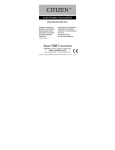
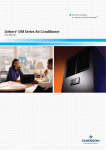
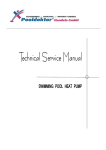
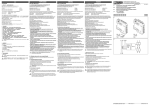
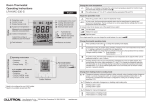

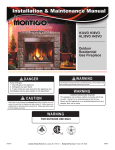
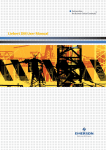
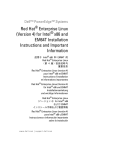
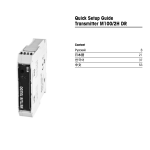
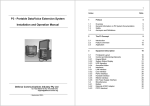
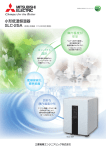
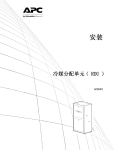
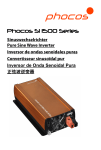


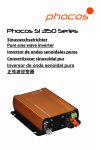
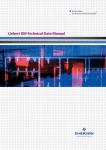
![特長など[PDF]](http://vs1.manualzilla.com/store/data/006533751_2-ccb7b66d18eb674acf28c93e1b51fc82-150x150.png)

